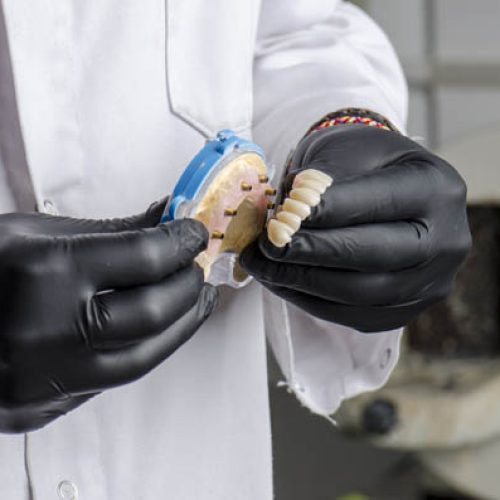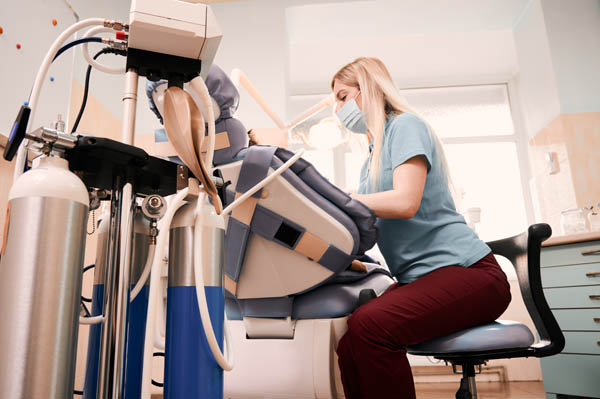A set of implant supported dentures can restore a smile by creating a permanent set of artificial teeth. The first benefit of permanent or fixed dentures is that they function like natural teeth, which means no slippage. The second upside of implant-supported dentures is their contribution to the health of the jaw.
The oral health benefits of implant-supported dentures
A missing tooth leaves a gap that goes all the way into the jaw, which is less than ideal. The absent tooth root is no longer there to stimulate bone regeneration in the jaw. This puts the jawbone at risk of losing bone mass. In the long term, people who stick to removable dentures start to lose definition in their lower face.
Dental implants act as replacements for tooth roots. Like a natural tooth root, a dental implant will flex in the jawbone as its wearer chews or bites down. The minimal movement of the implant stimulates the regeneration of the jawbone. To put it another way, an implant triggers the jaw to create new bone tissue to replace the minerals it loses to resorption.
Fixed full-arch restoration with dental implants
One dental implant can support a single dental restoration. Several dental implants in strategic positions can support a prosthetic replacement for every tooth on a dental arch. This is what full-arch restoration means: The use of an implant-supported denture to replace every tooth on the jaw.
How many implants will a dentist use to support a patient’s permanent dentures? It depends on:
- The mass and density of the patient’s jawbone
- The full-arch dental restoration technique the dentists chooses
- Whether the procedure is for the upper or lower jaw
The rest of the article looks at the ideal number of implants necessary for the success of implant-supported dentures on the upper arch.
Full arch restoration on the upper jaw
A good dentist will walk their patient through the process of full-arch dental restoration. They will explain the treatment plan they craft for their patient. The explainer should cover the number of implants needed and the reason why said implants go in certain spots.
The upper and lower jawbones are different in their structure. The lower jaw is stronger with far greater bone density than the upper jaw. It also has fewer adjacent structures to tiptoe around during implant surgery.
In contrast, the upper jaw has less bone density, making it the soft board to the lower jaw’s hardwood. Now, a solid jawbone provides solid support for a dental implant, which becomes a solid anchor for a restoration or prosthetic. This is the main consideration that a dentist accounts for as they work out how many implants their patient needs.
The ideal number of implants for full arch dental restoration of the upper jaw
For the patient who is an excellent candidate for treatment, the dentist will use four implants. If the bone density of the patient’s upper jaw is on the low side, the dentist may use five or six implants.
As a rule of thumb, an oral surgeon will avoid areas of the upper jaw that sit close to sinus cavities and certain nerves. This is the reason why it is rare to find a dentist who recommends eight implants. In contrast, a healthy lower jaw can easily accommodate eight implants.




